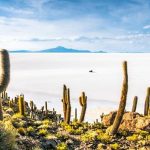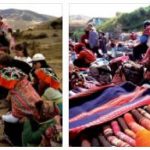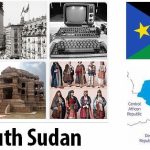Peru is an independent nation in South America. With the capital city of Lima, Peru 2020 population is estimated at 32,971,865 according to countryaah. For thousands of years, several high cultures had replaced each other in the area that today constitutes Peru when the Incarri began to emerge during the 12th century. It spread over the following centuries and came to cover one third of South America. The Spanish conquest of the area in the early 16th century marked the end of the Inca culture. Millions of people died and villages were destroyed. The capital Lima was founded in 1535 by the colonizers and became a center of the Spanish empire. Peru proclaimed its independence in 1821.
- AbbreviationFinder.org: Comprehensive guide to and popular abbreviations of Peru, covering history, economy, and social conditions.
The oldest traces of human settlements in Peru are at least 12,000 years old. New archaeological excavations in the valley of the Super River north of Lima have shown that the first prominent culture developed from 3100 to 1800 BC around a city called Caral. The community was based on agriculture with irrigation, and large pyramids and residential areas were erected. Culture is the earliest known example of urban development in America. For Peru political system, please check diseaseslearning.
Caral culture was replaced by agricultural and fishing culture in the kingdom of Chavín on the coast and in the highlands of northern Peru, which flourished from 950 to 450 BC. Of the cultures that then developed, mochica, huari, paracas and nazca were the most prominent. The oldest found mummy in Latin America is about 1,300 years old. The mummy is believed to have been a high official of the warrior huari. During the mochica civilization (the heyday of the 8th century AD), terraces and irrigation facilities were built which are still partially in use. The Tiahuanaco civilization on Lake Titicaca is best known for the so-called Sun Gate (in present-day Bolivia) and is estimated to have reached its peak during the 5th century AD, but the social system began to disintegrate after the year 1000. A century later, the Chimú Empire’s flowering period began northern Peru and southern Ecuador. This culture,
Inca culture grew in the 12th century in the area around the city of Cuzco in the southern part of present-day Peru. During the 13th century, the area of the Inca people gradually began to grow at the expense of the neighboring people. In the mid-1400s, Inca began the conquest trains, which led to almost one-third of South America (current Bolivia, Ecuador, Peru, southern Colombia and northern Chile) under its dominance.
Rapid Spanish colonization
In 1532, the Spaniards, led by Francisco Pizarro, arrived in Peru. During this time, an internal power struggle was going on in the empire, which was used by the Spaniards to conquer the whole country over the course of a few years. In 1535 Lima was founded, which became the capital of the Spanish Viceroy of Peru.
In Peru, large silver assets were discovered and the huge amount of precious metal that the Spaniards shipped home from Peru across the Atlantic contributed to Europe’s industrialization. However, for the original population, the Spanish colonial empire was a disaster. The Incarik’s livelihood system collapsed, which in combination with war, new illnesses and forced labor, led the population to decline from perhaps 12 million to 2 million in 50 years.
The colonizers forced the villages away from the best agricultural lands and formed large estates, where the local residents were forced to work. On the coast, plantations were built where sugar and cotton were grown for export. At the plantations worked black slaves that the Spaniards brought from Africa. A series of uprisings against the Spanish empire culminated in what was led by the Túpac Amaru II, the 1780s. However, the uprising was always fought down.
Lima had a favored position as the center of the Spanish empire, and so the dissatisfaction of the Spanish kittens with the sovereignty of the mother country came to develop later in Peru than in other Spanish colonies on the American continent.
The core of the forces that eventually fought for independence was not peruvians, but also independence fighters from other Spanish colonies. Most Spanish kittens in Peru fought on Spain’s side in the protracted and bloody war of independence. In 1821, the Argentine General José de San Martín entered the city of Lima and proclaimed an independent Peru.
Free time for free Peru
However, no decisive victory against Spain came about until the battle of Ayacucho in 1824, which meant the end of Spain’s colonial rule in South America.
The first period of independence was marked by constant civil disputes between various local military leaders, caudillos. One regime and constitution replaced the other. Only in the 1850s was some stability achieved under President Ramón Castilla. He abolished slavery in 1854.
Peru, from the 1840s, received large income from guano, a phosphorus- and nitrogen-rich bird droppings from the islands off the coast of Peru, which were sold as fertilizers to Europe and North America. Guanon ended after about 40 years, but before that Peru was able to build up its economy thanks to the large export revenue, and railway lines from the mines to the coast could be built.
On two occasions during the second half of the 19th century, land conflicts led to wars between Peru and neighboring countries. A war against Ecuador (1859-1860) was won by Peru but did not lead to any final agreement on the border crossing. Struggles over a mineral-rich desert area in the south led to the so-called Pacific War (1879-1883) between Peru and Bolivia on one side and Chile on the other. Peru and Bolivia suffered major defeats and Peru had to resign some provinces to Chile. However, after American mediation, Peru regained a province in 1929.
Towards the end of the 19th century, Europeans and Americans began investing in Peru. Sugar and cotton production grew, and exports of oil, copper and silver led to steady economic growth. The economic elite ruled the country through the Civilist Party, and under a number of governments until the First World War, Peru experienced political stability and economically good times. Industries began to be built up, and with this came increased immigration to the cities, among other things.
Military rule and dictatorship
During World War I, exports fell, and after social unrest and political strife, the military seized power. A radical labor movement had emerged, and an unpopular university reform contributed to the emergence of radical student movements. After a return to civilian rule, the country was given a constitution in 1920 that laid the foundation for social and economic reforms. President was then Augusto Leguía, but his regime, which was popular in the early years, became increasingly dictatorial, and he was overthrown by the military in 1930. The country had then been subjected to economic mismanagement with increasing debts abroad and widespread corruption within a growing bureaucracy.
The difficult times led to the strengthening of political forces on the left. A radical student leader, Victor Haya de la Torre, built a revolutionary organization, the American Revolutionary Popular Alliance (APRA), which managed to capture the discontent that existed in broad groups of people. Among other things, Apra wanted to nationalize the business community and fight US influence in the country.
Haya de la Torre barely lost in the 1931 presidential election, and Apra staged an armed uprising, which was defeated. The party was banned and not allowed to take part in any elections until 1945. Throughout the 1930s, the army continued to persecute and kill members of Apra, who responded with bomb attacks against the regime.
The conflict with Ecuador over large tracts of land north of the Amazon River and the Marañón River led to a short-lived war in 1941. Peru’s army triumphed and the country was allocated to negotiations almost all of the disputed territory. However, the conflict has continued into our days (see Foreign Policy and Defense).
Democratic tendencies were strengthened during World War II and Haya de la Torre softened Apra’s revolutionary profile. The party got a seat in the government after the 1945 elections. Three years later, Apra members participated in a mutiny in the Navy, after which the party was again banned when the military seized power in 1948 on behalf of the ruling elite.
2002
July
The ex-spy boss is sentenced
Former spy boss Vladimiro Montesinos receives nine years in prison for corruption. In 2003 there will be further convictions for five and eight years in prison, respectively, for abuse of power and embezzlement, and in 2004 a sentence of 15 years in prison for corruption and conspiracy.
Fujimori is charged with treason
In Parliament, former President Alberto Fujimori accuses him of treason. Fujimori is in voluntary exile in Japan.
April
The war on guerrillas is being investigated
A Truth and Reconciliation Commission formed to investigate events during the war against the guerrillas in the 1980s and 1990s begins its work.
2001
June
The ex-spy chief is arrested abroad
Former spy boss Vladimir Montesinos is arrested in Venezuela and flown back to Peru.
Alejandro Toledo wins in the presidential election
Economist Alejandro Toledo from the Middle Alliance A possible Peru beats ex-president Alan García in the second round of the presidential election. Toledo wins with 53 percent of the vote against García’s 47 percent. Toledo becomes the country’s first president belonging to the indigenous peoples.
May
High judges are replaced
The Chairman of the Supreme Court and nine other high ranking judges are dismissed. They are accused of conspiring with Fujimori’s controversial spy chief Vladimiro Montesinos, who played a key role in the bribery scandal that swept the president.
April
Military commanders are replaced
The commanders of the army, the navy and the air force are replaced.
March
Ex-President Fujimori is to be prosecuted
A court is opening a lawsuit against former President Alberto Fujimori for negligence in the post.









